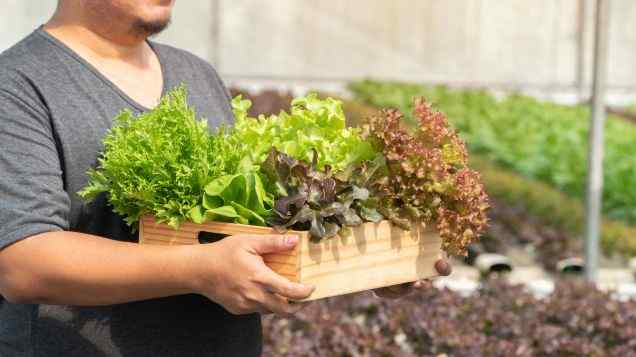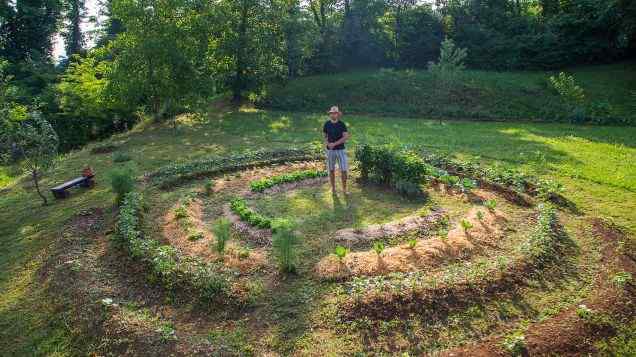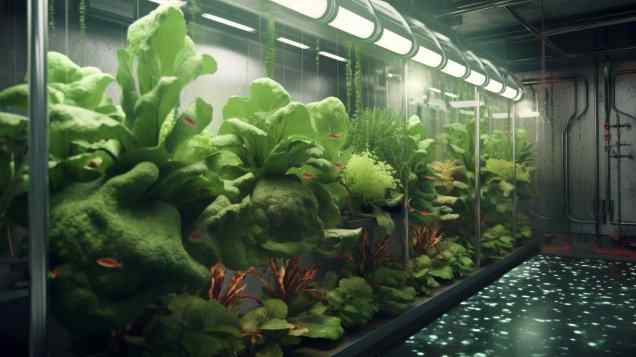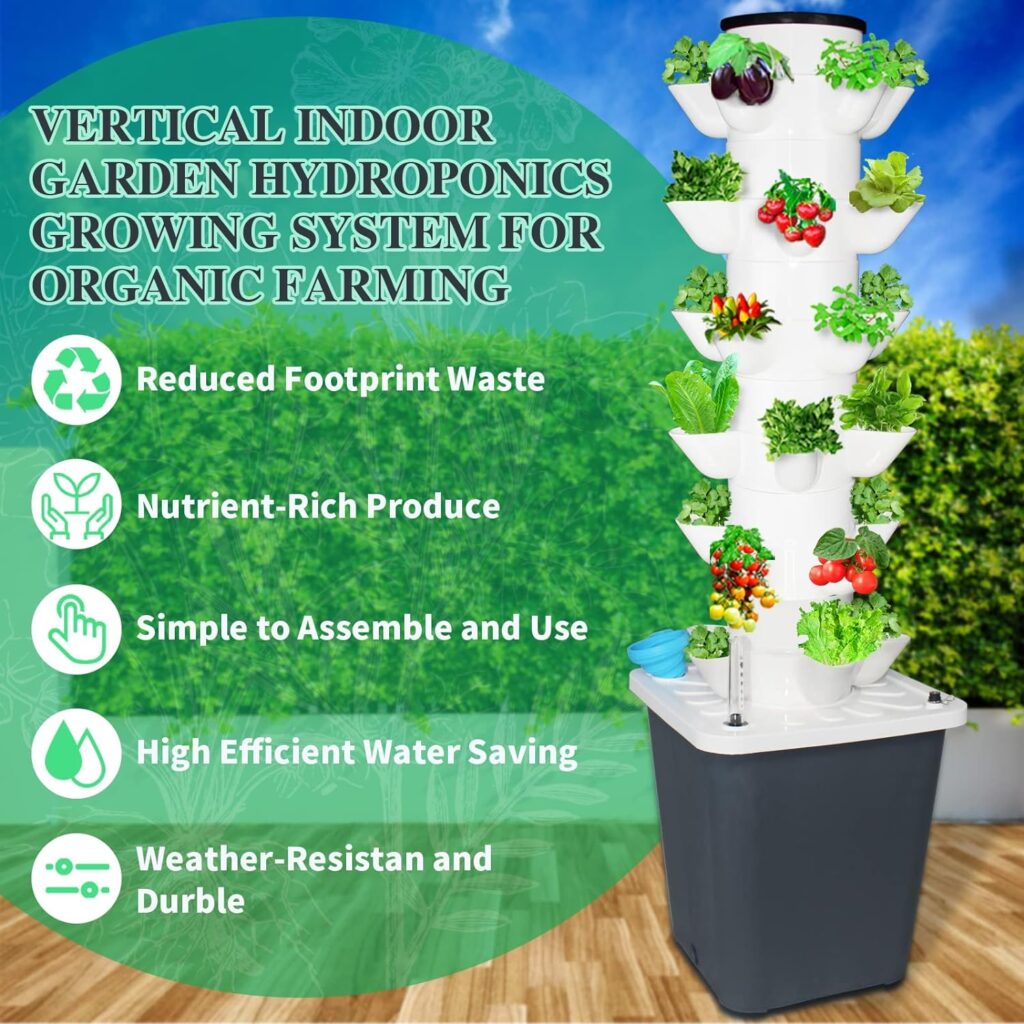If you’re looking to start your own aquaponics system and are unsure about which plants to choose, this article is here to help! Selecting the right plants for aquaponics is crucial for the success of your system. Not only do you want plants that can thrive in a water-based environment, but you also need plants that can take advantage of the nutrient-rich water provided by the fish waste. In this article, we will explore some key factors to consider when selecting plants for aquaponics, as well as provide a list of popular plants that are known to do well in this unique gardening method. Get ready to explore the world of aquaponics and discover the perfect plants for your system!
Factors to Consider When Selecting Plants
When it comes to selecting plants for your aquaponics system, there are several important factors that you should consider. These factors will determine whether a particular plant will thrive in your system and produce a bountiful harvest. By taking these factors into account, you can ensure that you choose the right plants for your aquaponics setup.
1. Nutrient requirements
Different plants have varying nutrient requirements, and it is crucial to choose plants that have similar nutrient needs as the fish in your system. In aquaponics, the waste produced by the fish provides essential nutrients for the plants, so it is important to select plants that can efficiently utilize these nutrients. Leafy greens, such as lettuce, spinach, and Swiss chard, are popular choices as they have relatively low nutrient requirements.
2. Light requirements
Light is an essential factor for plant growth, and it is important to choose plants that match the available light in your aquaponics system. Some plants require full sun, while others can tolerate partial shade. Consider the location of your aquaponics system and the amount of natural light it receives throughout the day when selecting plants. Leafy greens, herbs like basil and mint, and tomatoes are all examples of plants that generally thrive in well-lit conditions.
3. Temperature requirements
Plants have different temperature preferences, and it is important to choose plants that can tolerate the temperature range in your aquaponics system. Some plants prefer cooler temperatures, while others thrive in warmer conditions. Take into account the average temperature in your location and the temperature fluctuations within your aquaponics system to ensure that you select plants that can adapt to these conditions.
4. pH tolerance
The pH level of the water in your aquaponics system is an important factor to consider when selecting plants. Different plants have varying pH preferences, and it is crucial to choose plants that can tolerate the pH range in your system. Leafy greens, herbs like parsley and basil, and tomatoes are examples of plants that typically grow well within a neutral pH range.
5. Growth rate
Consider the growth rate of the plants you are considering for your aquaponics system. Some plants grow quickly and can be harvested multiple times in a season, while others have a longer maturation period. Depending on your goals and available space, you may prefer faster-growing plants that can provide a more frequent harvest.

6. Space availability
The size of your aquaponics system will determine the amount of space available for plant growth. Some plants, such as leafy greens and herbs, have a compact growth habit and require less space. On the other hand, plants like tomatoes and cucumbers are larger and will require more vertical or horizontal space. Consider the dimensions of your aquaponics system and choose plants that will fit and thrive within the available space.
7. Desired harvest time
If you have specific harvest goals, it is essential to consider the time it takes for plants to reach maturity. Some plants, like leafy greens and herbs, can be harvested in a matter of weeks, while others, like tomatoes and cucumbers, take longer to produce a harvestable yield. Decide how soon you want to start seeing results from your aquaponics system and choose plants accordingly.
8. Disease and pest resistance
It is important to select plants that are resistant to common diseases and pests that may affect aquaponics systems. This can help minimize the risk of plant loss and ensure a successful harvest. Consider the prevalent diseases and pests in your area and choose plants that have a reputation for resistance to these challenges.
9. Taste and market demand
If you plan to consume or sell the produce from your aquaponics system, it is important to consider taste and market demand when selecting plants. Choose plants that have a desirable flavor profile and are in high demand in your area. This will not only enhance your own enjoyment of the harvest but also increase the marketability and potential profitability of your aquaponics system.
10. Complexity of maintenance
Different plants have varying maintenance requirements, and it is important to choose plants that align with your level of expertise and the amount of time you can devote to maintenance tasks. Some plants require frequent pruning, trellising, or other care practices, while others are relatively low-maintenance. Consider your own gardening skills and the amount of time you can commit to plant care when selecting plants for your aquaponics system.
Now that we have discussed the various factors to consider when selecting plants for your aquaponics system, let’s delve into some specific plant options that are well-suited for aquaponics.
Suitable Plants for Aquaponics
When it comes to selecting plants for your aquaponics system, certain types of plants tend to thrive and produce excellent yields. Here are some plant options that are particularly well-suited for aquaponics:
2.1 Leafy greens
Leafy greens, such as lettuce, spinach, and Swiss chard, are ideal for aquaponics systems. They have relatively low nutrient requirements, allowing them to efficiently utilize the waste produced by the fish. Leafy greens also tend to grow quickly, resulting in bountiful harvests.
2.2 Herbs
Herbs are another great option for aquaponics systems. Basil, mint, and parsley are particularly well-suited for this type of setup. They are compact plants that require minimal space, making them ideal for smaller aquaponics systems. Additionally, herbs are highly sought after in the market and can provide a valuable addition to your harvest.
2.3 Tomatoes
Tomatoes are a popular choice for aquaponics enthusiasts. They require ample light and space for optimal growth, but when provided with these conditions, they can produce abundant yields. Tomatoes grown in aquaponics systems are often sweeter and more flavorful compared to those grown in traditional soil-based gardens.
2.4 Cucumbers
Cucumbers are vine plants that thrive in aquaponics systems. They require ample vertical space for vertical trellising and have high water requirements. However, when provided with the necessary conditions, cucumbers can produce a generous harvest. They are particularly popular in salads and can be a valuable addition to your aquaponics system.
While there are several plants that thrive in aquaponics systems, there are also certain plants that are not well-suited for this type of setup. Let’s explore some plants that are best avoided in aquaponics.

Plants to Avoid in Aquaponics
While aquaponics systems can accommodate a wide variety of plants, there are certain plants that are better suited for traditional soil-based gardens. Here are some plant options that are best avoided in aquaponics:
3.1 Heavy feeders
Plants that are heavy feeders, meaning they have high nutrient requirements, are generally not suitable for aquaponics systems. These plants often demand more nutrients than the fish waste can provide, leading to nutrient deficiencies and poor plant growth. Examples of heavy feeders that are best avoided in aquaponics include corn, squash, and watermelon.
3.2 Root vegetables
Root vegetables, such as carrots, potatoes, and radishes, should generally be avoided in aquaponics systems. These plants require loose soil for proper root development, which is not present in most aquaponics setups. Additionally, root vegetables often require longer growing seasons and may not produce satisfactory yields in the limited space of an aquaponics system.
3.3 Fruit trees
Fruit trees have extensive root systems and require large amounts of water and space to thrive. As such, they are not well-suited for aquaponics systems, which generally have limited space and water availability. If you are interested in growing fruit trees, it is best to opt for traditional soil-based methods.
3.4 High-nitrogen plants
Plants that have high nitrogen requirements, such as legumes or plants that are part of the brassica family (e.g., broccoli, cabbage), are not recommended for aquaponics systems. These plants can create an imbalance in the nutrient levels within the system, adversely affecting the growth of other plants and potentially causing nutrient deficiencies.
Now that we have discussed the types of plants to consider and avoid in aquaponics, let’s explore the concept of companion planting and how it can benefit your aquaponics system.
Companion Planting in Aquaponics
Companion planting is the practice of growing certain plants in close proximity to benefit each other in some way. This technique can be highly advantageous in an aquaponics system, as it can enhance plant growth, deter pests, and improve overall system health. Here are some benefits of companion planting in aquaponics:
4.1 Benefits of companion planting
- Improved nutrient uptake: Certain plants, when grown together, can enhance each other’s nutrient absorption. For example, legumes have nitrogen-fixing bacteria in their root nodules, which can provide a source of nitrogen for neighboring plants.
- Natural pest control: Some plants have natural pest-repellent properties that can help protect neighboring plants from pests. By strategically planting these pest-repellent plants, you can reduce the risk of pest infestations in your aquaponics system.
- Enhanced pollination: Certain plant combinations can attract beneficial pollinators, such as bees and butterflies, to your aquaponics system. This can improve pollination rates and result in higher yields for your plants.
4.2 Examples of compatible plants
Here are a few examples of compatible plant combinations that can thrive in aquaponics systems:
4.2.1 Basil and tomatoes
Basil and tomatoes are considered excellent companions in aquaponics systems. Basil can repel pests that commonly affect tomatoes, such as aphids and tomato hornworms. Additionally, basil’s aromatic foliage can enhance the flavor of tomatoes when grown in close proximity.
4.2.2 Marigolds and leafy greens
Marigolds are known for their pest-repellent properties and can benefit leafy greens in aquaponics systems. Planting marigolds near leafy greens can help deter pests and reduce the risk of infestations.
4.2.3 Nasturtiums and cucumbers
Nasturtiums are often used as trap crops to lure pests away from cucumbers in aquaponics systems. The bright flowers of nasturtiums attract pests like aphids, keeping them away from the cucumbers. Additionally, nasturtiums are edible and can add a peppery flavor to your harvest.
While companion planting can be highly beneficial in aquaponics systems, it is important to consider the specific requirements and compatibility of different plant combinations before implementing them in your system.
Now that we have covered the concept of companion planting, let’s explore the special considerations for plant adaptation in both water and soil-based aquaponics systems.
Special Considerations for Adaptation
When selecting plants for your aquaponics system, it is important to consider their adaptation to the unique conditions of both water-based and soil-based systems. Different plants have varying abilities to adapt to these conditions, and understanding their requirements will help ensure their success. Here are some special considerations for plant adaptation in aquaponics:
5.1 Plant adaptation in water
Aquaponics systems primarily rely on water as the growing medium for plants. Within this context, there are three categories of plant adaptation:
5.1.1 Floating plants
Floating plants, such as water lettuce and water hyacinth, are well-suited for aquaponics systems. These plants have root systems that dangle in the water, extracting nutrients directly from the system. They help in filtering the water and provide shade for fish, thus promoting a healthy aquatic environment.
5.1.2 Submerged plants
Submerged plants, like watercress and anacharis, are fully submerged in the water, with both their shoots and roots underwater. These plants can absorb nutrients from the water, contributing to the overall nutrient balance in the system. Submerged plants are particularly beneficial for oxygenating the water and providing shelter for fish.
5.1.3 Moisture-tolerant plants
Certain plants, such as taro and callaloo, have a natural ability to tolerate high moisture levels. These plants can thrive in the damp environment of aquaponics systems and are especially suitable for flood and drain or media bed systems.
5.2 Plant adaptation in soil
In some aquaponics systems, plants can be grown in soil or soil-like growing media. In these cases, there are three common methods of plant adaptation:
5.2.1 Hydroponics
Hydroponics is a soilless growing method that relies on a nutrient-rich water solution to nourish plants. In aquaponics, hydroponics can be used in combination with fish waste to provide the necessary nutrients. Plants like lettuce and strawberries are well-suited for hydroponic systems within aquaponics.
5.2.2 Raised beds
Raised beds are another option for growing plants in aquaponics systems. The beds are filled with a suitable growing medium, such as a mixture of compost and vermiculite. Plants with extensive root systems, such as root vegetables, can be successfully grown in raised beds within aquaponics setups.
5.2.3 Vertical towers
Vertical towers are vertical structures that can accommodate plants in a compact space. These towers often utilize a hydroponic or aeroponic system to deliver nutrients directly to the plants. Leafy greens and herbs are well-suited for vertical towers in aquaponics systems.
By understanding these various adaptation methods, you can choose plants that align with the specific conditions of your aquaponics system and maximize their growth potential.
Now that we have discussed plant adaptation, let’s explore ways to optimize plant growth in your aquaponics system.
Optimizing Plant Growth in Aquaponics
To ensure the health and productivity of your plants in an aquaponics system, it is important to optimize various factors that contribute to plant growth. Here are some key considerations for maximizing plant growth in your aquaponics system:
6.1 Proper nutrition
Providing plants with proper nutrition is essential for their growth and productivity. In aquaponics, the fish waste provides essential nutrients for the plants, but it is important to monitor and maintain the nutrient levels in the system. Regularly test the water for nutrient concentrations and adjust accordingly to provide plants with the necessary elements for healthy growth.
6.2 Lighting considerations
Light is a critical factor in plant growth, and different plants have varying light requirements. Consider the available natural light in your aquaponics system and provide additional artificial lighting if necessary. LED grow lights are a popular choice for indoor aquaponics setups and can be adjusted to meet the specific light requirements of different plants.
6.2.1 Natural sunlight
If your aquaponics system is outdoors or has access to ample natural sunlight, take advantage of this free and abundant light source. Position your plants in areas that receive the optimal amount of sunlight throughout the day to promote healthy growth.
6.2.2 Artificial lighting
If natural sunlight is limited or insufficient for your aquaponics system, consider using artificial lighting to supplement plant growth. LED grow lights are energy-efficient and can provide the full spectrum of light that plants need for photosynthesis. Position the lights at an appropriate distance from the plants to ensure proper light penetration and avoid burning the foliage.
6.3 Water temperature control
Maintaining the proper water temperature is crucial for optimal plant growth in aquaponics. Most plants thrive in temperatures between 65°F to 75°F (18°C to 24°C). Monitor the water temperature in your system and make adjustments as necessary to maintain the ideal range for your plants.
6.4 pH balance
The pH level of the water in your aquaponics system can affect nutrient availability to plants. Most plants prefer a slightly acidic to neutral pH range between 6.0 to 7.0. Regularly monitor and adjust the pH levels in your system to ensure that plants can efficiently take up nutrients.
6.5 Organic pest control
Pest management is an important aspect of plant growth in aquaponics. Avoid using chemical pesticides that can harm the fish and beneficial bacteria in your system. Instead, opt for organic pest control methods, such as introducing beneficial insects or implementing companion planting strategies. Regularly inspect your plants for signs of pests and take appropriate action if necessary.
6.6 Harvesting techniques
Harvesting techniques can impact the overall productivity of your aquaponics system. Follow proper harvesting practices for each type of plant to minimize damage and ensure the continued growth and production of new shoots or fruits. Proper pruning, cutting, or harvesting techniques will promote healthier and more vigorous plant growth.
6.7 Continuous planting for sustainable production
To maintain a steady supply of fresh produce, practice continuous planting in your aquaponics system. As you harvest mature plants, replant new seedlings or transplants to ensure a constant cycle of growth and production. This approach allows for sustainable and consistent yields throughout the year.
By optimizing these various factors that contribute to plant growth, you can create a thriving and productive aquaponics system that provides an abundant harvest.
Conclusion
Selecting the right plants for your aquaponics system is crucial for its success. By considering factors such as nutrient requirements, light requirements, temperature preferences, pH tolerance, growth rate, space availability, desired harvest time, disease and pest resistance, taste and market demand, and complexity of maintenance, you can choose plants that will thrive and provide a bountiful harvest.
Leafy greens, herbs like basil and mint, tomatoes, and cucumbers are among the suitable plants for aquaponics. On the other hand, plants like corn, squash, watermelon, carrots, potatoes, radishes, fruit trees, and high-nitrogen plants are best avoided in aquaponics systems.
Consider companion planting to maximize plant growth, deter pests, and improve system health. Understand the special considerations for plant adaptation in both water and soil-based aquaponics systems, and optimize plant growth through proper nutrition, lighting, water temperature control, pH balance, organic pest control, harvesting techniques, and continuous planting.
With these considerations in mind, you can create an effective and productive aquaponics system that not only provides fresh and flavorful produce but also contributes to sustainable and environmentally friendly gardening practices. Happy growing!


